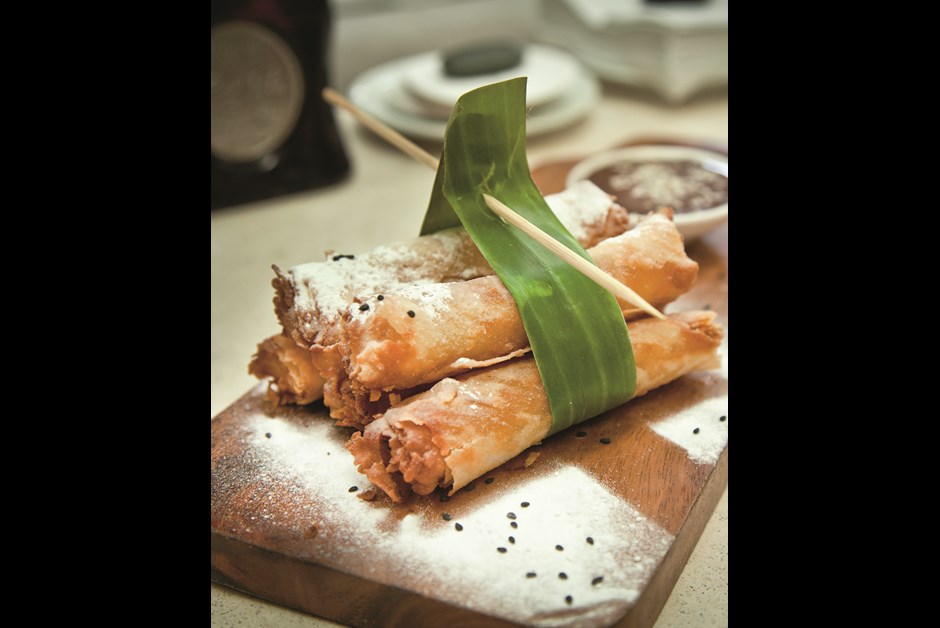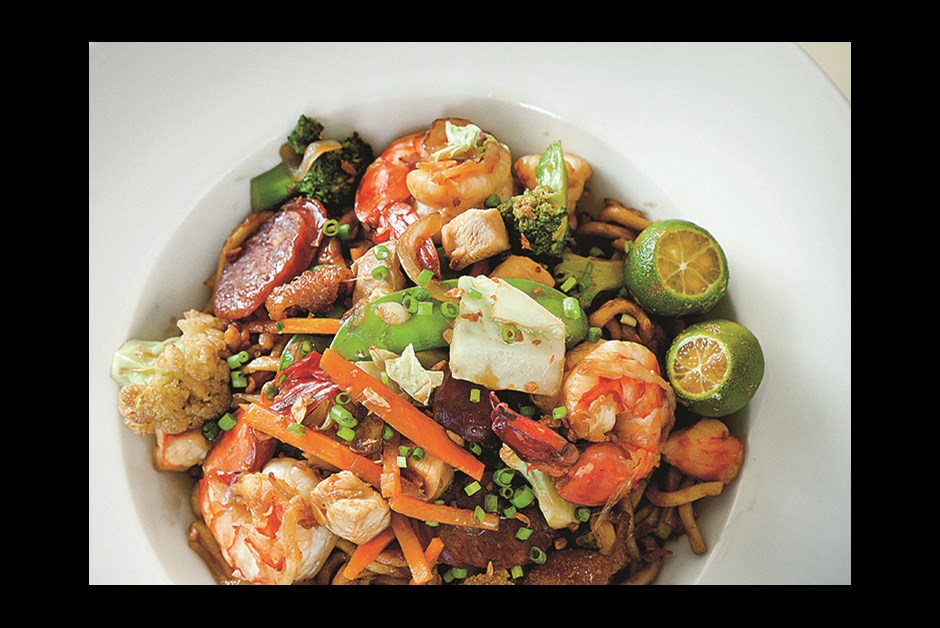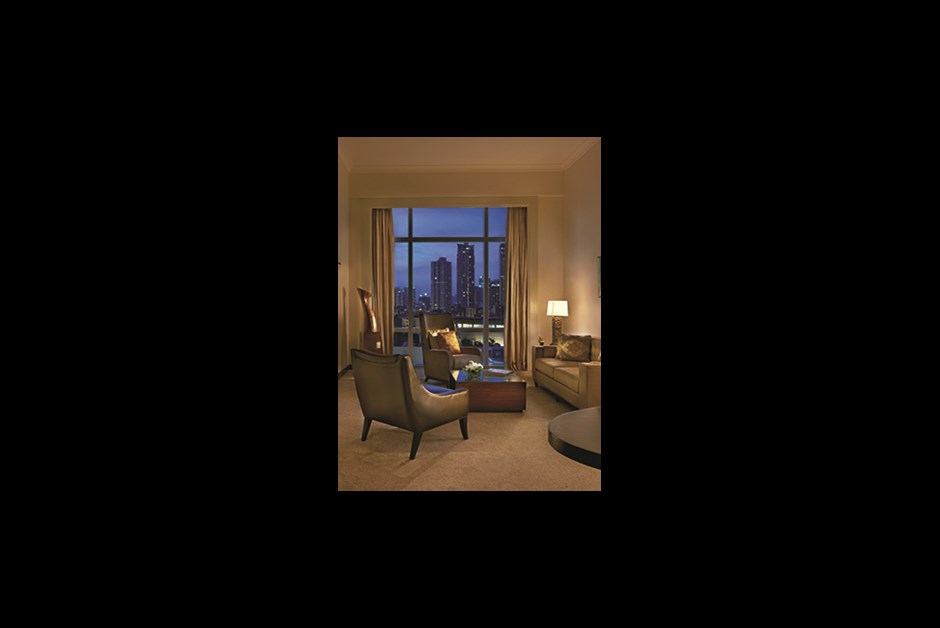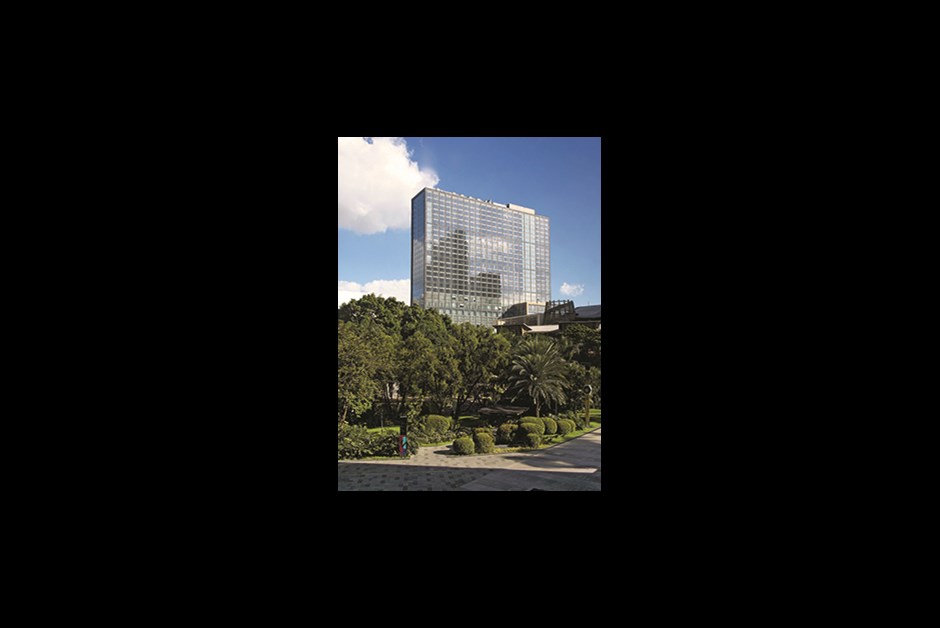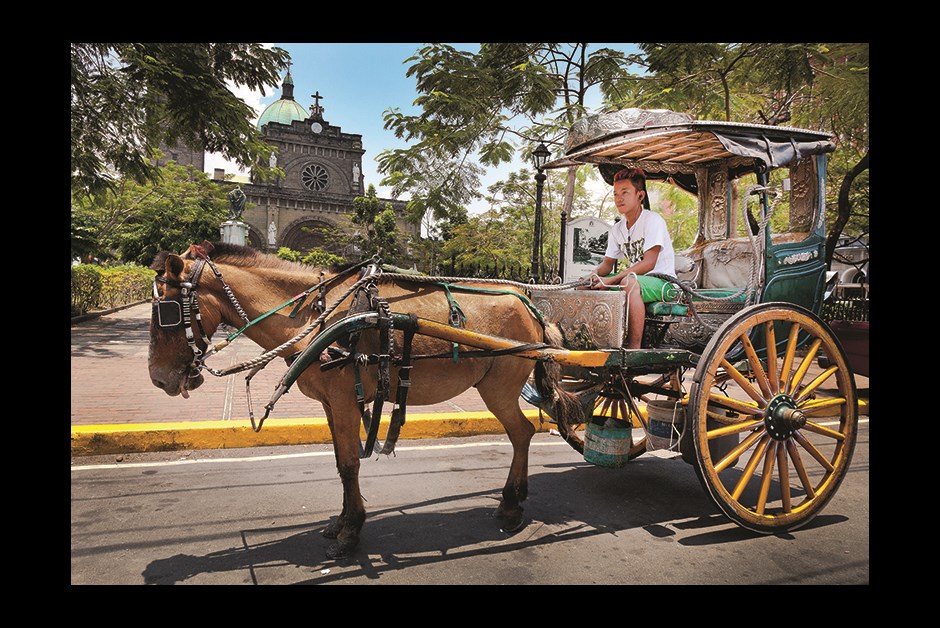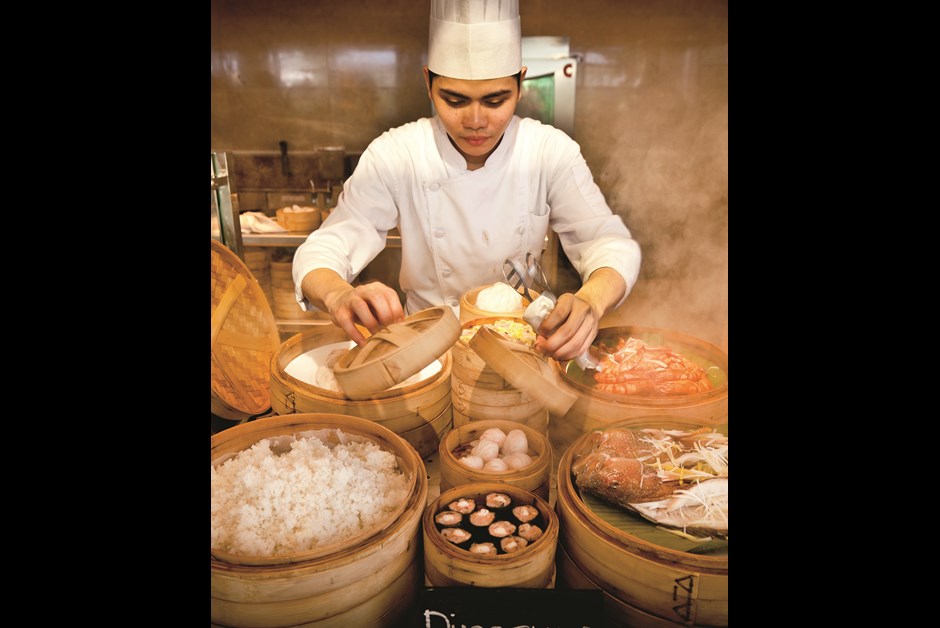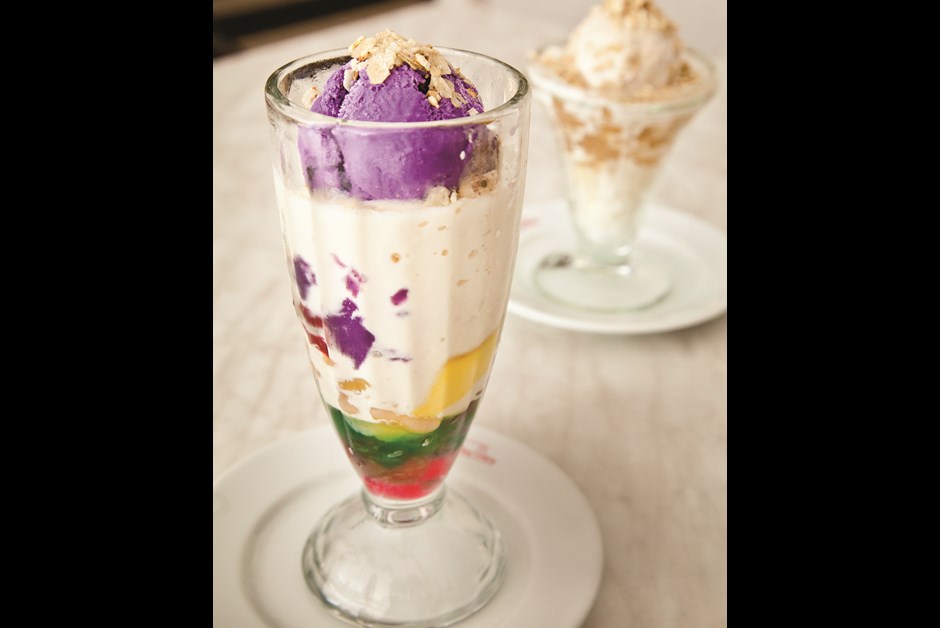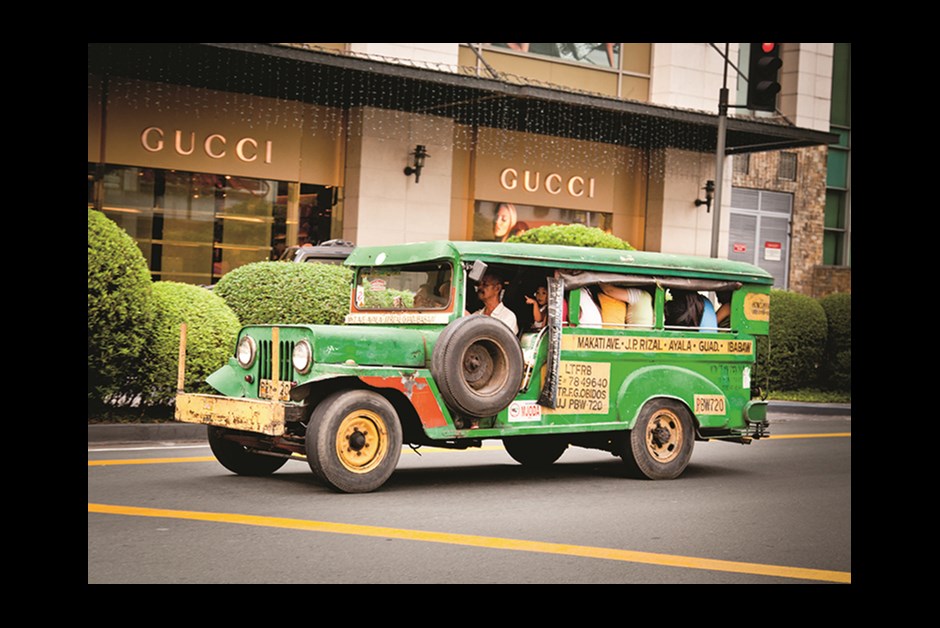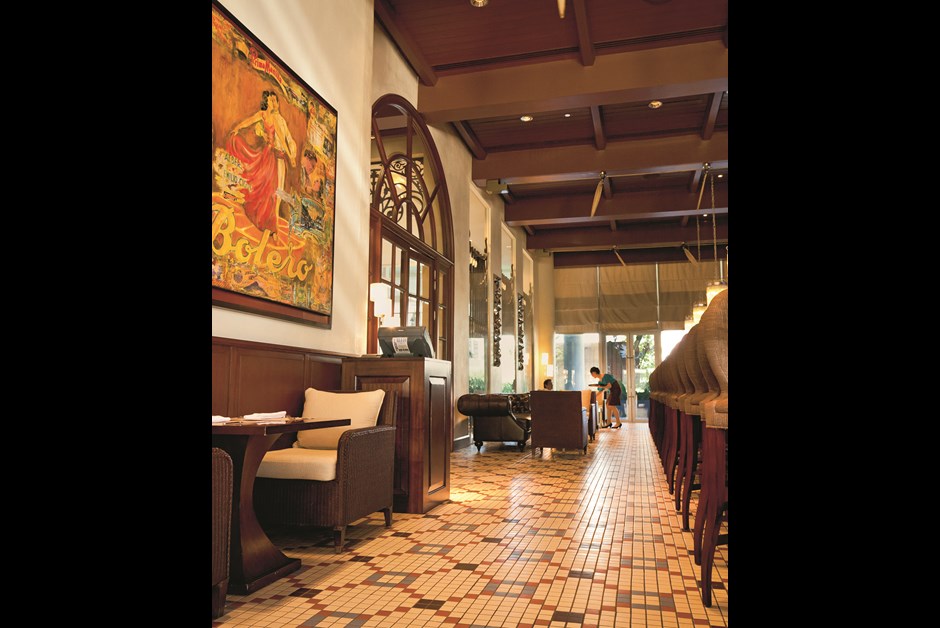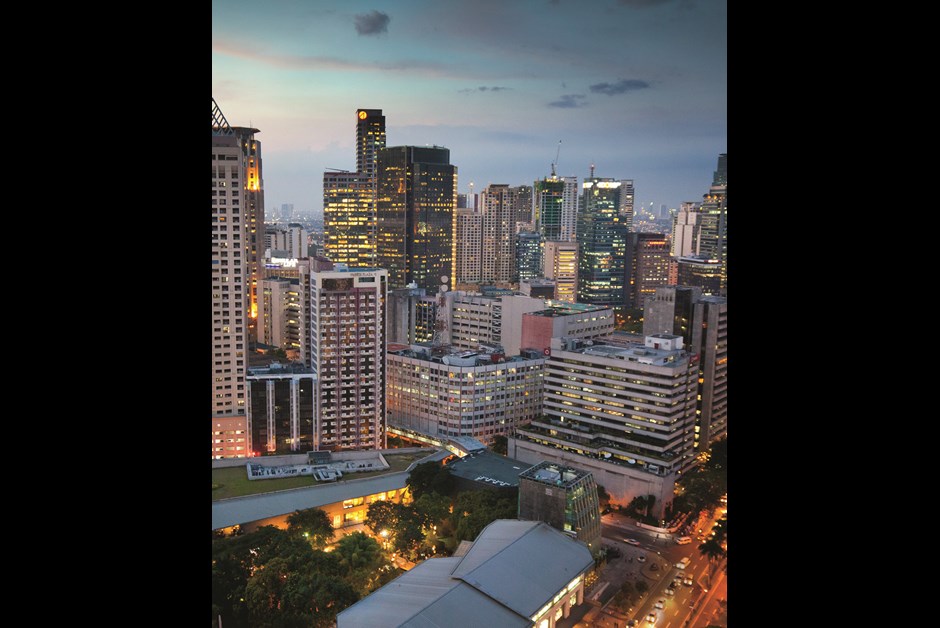Perfecting Pinoy - Fairmont Makati
Top chefs, design-conscious restos and cheeky plays on traditional dishes: A culinary exploration of Manila reveals an exploding foodie scene that goes well beyond adobo
~Text and photos by Remy Scalza
On a steamy Friday night, the patios of Fort Bonifacio are overflowing with the young and well dressed. Taxis form a line as they drop off passengers in front of a simple neighborhood bistro called Aracama, a single room with bold, patterned wallpaper and butcher’s paper on the tables. Inside, the beef is cooked sous-vide. The cheese is artisanal. The cocktails are mixed with craft-distilled rum and the appetizers are playful, tongue-in-cheek takes on street food. None of which would be noteworthy in New York, London or Tokyo. But this is Metro Manila. And the menu at Aracama is boldly, proudly Filipino.
Unlike its cousin cuisines in Thailand or Japan, Filipino – or Pinoy – food does not enjoy a sterling global reputation. If international diners do have anything to say about it, it’s generally unflattering. “You hear the complaints: Our food is too heavy, it’s too sweet, it’s got no styling,” says JJ Yulo, a Manila food writer and chef who trained at the Institute of Culinary Education in New York. “But those are clichés. All it takes is for people to give Pinoy food a chance.” Luckily, I’ve come to Manila with an open palate and an open mind. Tonight, Aracama is filling up fast. The Fort neighborhood is part of upscale Taguig, one of a network of 16 cities that are home to Metro Manila’s 12 million inhabitants. The restaurant is surrounded by glades of new skyscrapers and expansive pedestrian malls. Hummers and Ferraris prowl streets lined with international luxury boutiques like Gucci and Prada.
But inside, the dishes are local staples – classics like adobo, the meaty stew considered the Philippines’ unofficial national dish, reborn here with fresh ingredients and a light touch. The server steers me to a house specialty, kare-kare. Stewed oxtail – a darling of global foodies – is flavored with peanut sauce and bagoong, a fermented shrimp or fish paste ubiquitous in Filipino cooking. Banana hearts wrapped in cabbage leaves, served on the side, offer a splash of color. The result is unexpected, complex and exquisite. “What we’re seeing is a renaissance of Filipino cuisine in the Philippines,” Yulo says. “Manila is rediscovering itself.”
To better understand where Filipino food is going, it helps to know where it has been. On a hot, cloudless morning, I catch a cab that takes me far from posh Fort Bonifacio to Intramuros, the walled compound in downtown Manila where the city was born. The Spanish claimed the Philippines in 1565, ruling nearly uninter- rupted for the next 333 years before ceding control to the Americans. The distant outpost of Manila grew into the Pearl of the Orient, a vibrant center of commerce with grand boulevards, ornate cathedrals and a cosmopolitan sensibility unlike any city in Asia.
While almost all of the old city was reduced to rubble during World War II, a few traces of the past do survive. Along a quiet lane, not far from the whitewashed presidential palace, is a row of Spanish colonial- style homes spared from destruction. Here, one family mansion, built by a prominent Manila doctor in 1937, has been turned into a living museum of traditional Filipino cuisine. I climb a creaky wooden staircase to the second-floor dining room at La Cocina de Tita Moning, where the shades are drawn tight against the afternoon sun. Under heavy crystal chandeliers, servers clad in black and white shuffle between tables decked out in heirloom china and silver.
The menu, based faithfully on old family recipes, is a primer on the roots of Pinoy cuisine. Spanish cooking styles and ingredients – roasted pork, spicy sausages, even paellas – mix with Malay seasonings and native ingredients such as guava and coconut. Meanwhile, Chinese influences from centuries of trade show up in noodle dishes and spring rolls, sweet- ened and spiced for the local palate.
I start with sinigang, a sour soup flavored with tamarind and brimming with pieces of roasted pork. Then comes a whole crispy tilapia, seasoned with calamansi, the country’s native lime, and served with mango chutney. Finally, a traditional adobo is served: chunks of chicken and pork braised in garlic, vinegar and soy and paired with dinuguan, a savory stew of pig’s blood and offal. I can’t say I love every bite. But each dish is bold and uncompromising – flavors coming together in ways sure to bedazzle even jaded globe-trotting epicures.
In Filipino fashion, this is no quick meal. Around me, families talk, linger, sip and savor over an afternoon of epic eating. By the time I descend the stairs and head back out into Manila, the heat of the day has faded. My taxi crawls through traffic toward skyscrapers on the horizon. While the old city may offer perspective on where Filipino cuisine has been, to understand where it’s going I need to experience Metro Manila’s modern heart, Makati.
“This is the business center of one of Asia’s biggest cities. If you want to make a name for yourself as a restaurateur – or as anything – this is the place to do it,” says Robert Bolaños, executive sous-chef at one of Makati’s new culinary institutions, Fairmont Makati.
The city of Makati was born from the ashes of World War II, built on what was Manila’s airport. Today, the former runways – Ayala and Makati Avenues – are lined with the kind of high-end malls and shimmering high-rises that define the modern Asian megacity. Filipino movers and shakers (including 84-year-old shoe-loving former first lady Imelda Marcos) call its leafy suburbs home. Tower cranes loom over the concrete skeletons of new buildings, presaging future expansion.
Among the newest additions to the skyline is Fairmont Makati, a 30-story block of glass whose razor-sharp profile splits the city center. Opened in early 2013, the hotel is already drawing culinary faithful with its Sunday Champagne brunch. An elaborate buffet stretches the perimeter of the Spectrum restaurant, showcasing trending international cuisines from Indian tandoori to French patisserie. But what brings in the crowds week after week is a Pinoy fiesta favorite: lechon, roast suckling pig.
“It’s really not a party without a lechon,” says Bolaños, who then explains how the pig has been slow roasted for hours, turning the skin a deliciously crispy golden brown. I join the queue for a taste of pork prepared a half dozen ways: in tender slices, as crispy cracklings, marinated with vinegar and onions, even finely chopped and made into a succulent cheek-and-offal hash known as sisig.
“We have an extraordinary culinary tradition in the Philippines,” Bolaños says. “But we’re just starting to acknowledge that.” With 21 years of experience in the city’s best kitchens, Bolaños is a tireless booster of Pinoy cuisine – and among its harshest critics. “Formal culinary education is new here,” he says, so dishes aren’t standardized. Presentation and styling are often afterthoughts, he laments, while the country’s palate-popping mix of sweet and sour flavors can overwhelm international taste buds.
“But you don’t have to go far to elevate our cuisine,” Bolaños says, taking me into the kitchen to demonstrate. Into a frying pan, he tosses garlic, then fresh prawns, Spanish chorizo, chicken and pork belly. He adds a dash of soy, then carrots and snow peas and finally egg noodles before finishing it all with a twist of calamansi.
The result could be a fusion sensation, the kind of daring, East-meets-West dish, popping with color, that’s a staple of chic international kitchens. Instead, it’s a Pinoy classic, pancit guisado – a homey mash-up of Chinese and Spanish influences, spiffed up for international tastes. My Filipino culinary education wouldn’t be complete without a lesson on arguably the most important part of the meal: dessert. Back outside in Makati, the Manila summer is at its height. I swim through a humid afternoon, walking along palm-lined Makati Avenue past luxury condos and intersections buzzing with motorbikes.
In a lush park, devotees of stick fighting, the country’s native martial art, sweat through choreographed routines. Further on, SUVs and exhaust-puffing “jeepneys” – local buses that look like vintage army jeeps – deposit passengers into air-conditioned malls. Singing draws me to an open-air pavilion, which acts as an outdoor cathedral as worshipers belt out songs in their native Tagalog.
I meet back up with Yulo, the food blogger and chef, outside of a drab building dwarfed by Makati’s new high-rises. Inside, secreted away on the second floor, is one of the best-loved cafés in a city that adores its desserts: Milky Way. “One cliché about Filipinos is true,” Yulo says, scanning the encyclopedic menu. “We do have a sweet tooth.” Around us, Milky Way patrons suck back frosty treats from oversized glasses: bubble teas, sorbets, icy smoothies sweet- ened with steamed corn. Tropical fruits, from durian to ube, a purple yam, show up in a rainbow of pies, flans and sticky rice cakes.
Yulo finds a table in the corner. While we wait, he pulls up iPhone pictures of new restaurants, packed tapas bars, even a high-concept bistro known as The Goose Station that highlights Filipino historical milestones through food (the macabre meal conclusion being a cake-based representation of a national hero’s execution). It’s only a matter of time, Yulo says, before inter- national eaters and big-city chefs catch on to Filipino cuisine. “There’s so much to work with. We’ve got fresh seafood and amazing flavors and these diverse traditions. Everybody here, and I can really feel it, is waiting for the breakthrough.”
A waiter approaches with two tall parfait glasses filled with the consum- mate Pinoy dessert, halo-halo. Beneath a mound of purple ube ice cream is an improbable jumble of toasted rice and coconut, sweetened red beans and chickpeas, red and green gelatin for color, shaved ice to beat the tropical heat and at least a dozen other ingredients.
Conversation stops; spoons go to work. “It’s basically the Philippines as a dessert,” Yulo says finally. “A little bit of everything mixed together. But it works.”
Stay
Situated in Manila’s upscale fi- nancial district, the sleek FAIRMONT MAKATI is a refined retreat from the heat and bustle of the big city. The 280 spacious guest rooms and suites are styled with an eye toward con- temporary Asian elegance, while the rooftop pool and spa provide a refreshing oasis on balmy afternoons. fairmont.com/makati
Dine
Travelers seeking an elegant introduction to Filipino cuisine need look no further than SPECTRUM, Fairmont Makati’s flagship restaurant. Local classics from adobo to pancit (braised egg noodles) are prepared with light, fresh ingredients.
To experience the avant-garde of contem- porary Filipino dining, head to the nearby FORT BONIFACIO neighborhood, a posh new district favored by Manila’s culinary cogno- scenti. Don’t miss ARACAMA, where classic recipes get a contemporary update, and LAS FLORES, a Barcelona-style tapas bar that hints at the Spanish roots of Filipino dining.
Do
Makati is a city of malls, and the most impressive is GREENBELT, a shopper’s oasis of 300 stores and restaurants selling everything from Salvatore Ferragamo to Krispy Kreme. Greenbelt is also home to the AYALA MUSEUM, which houses paintings from Filipino masters and an entire floor of solid-gold indigenous artifacts from the 10th to 13th centuries.
